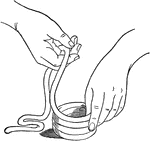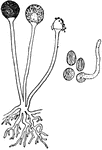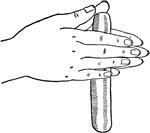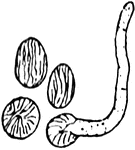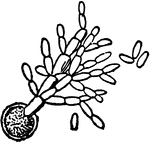Clipart tagged: ‘mold’

Microscopic view of a fermented apple
"Portions of the rotting pulp were placed on a microscopic slide, divided into hundredths and thousandths…
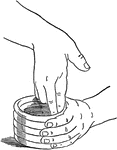
Smoothing a clay container
A pair of hands smoothing a clay container formed by curling large sections of rolled clay together.

Cudbear
A purple or violet powder, used in dyeing violet, purple, crimson, prepared for various species of lichens…

Heart of a Deer
"Cast or mold of the interior of the left ventricle of the heart of a deer. Shows that the left ventricular…

Dry Rot Fungus
Dry-rot fungus (Merulius lacrymans). A decay affecting timber, occasioned by various species of fungi,…
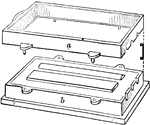
Two-Part Flask
"A shallow frame of wood or iron used in foundries to contain the sand and patterns employed in molding…

Stages of fungus growth
This illustration "represents its mycelium growth; 2,2 its budding cells, which terminate in fruit cells;…

Hair with ringworm
"A Piece of Hair from the Scalp infested with a Mold which produces Ringworm. Ringworm may occur anywhere…
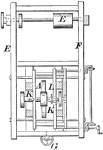
Molding Tool, Hat
This machine was used to mold different hat bodies, where the molding body spins about the axis and…

Powdery Mildew Ascus Containing Eight Ascospores
An illustration of powdery mildew showing the ascus containig eight ascospores.

Powdery Mildew Conidia Bearing Hypha
An illustration of powdery mildew showing conidia bearing hypha.

Powdery Mildew Sporocarp & Mycelium
An illustration of the sporocarp and mycelium of powdery mildew.
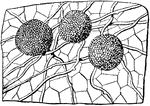
Powdery Mildew
An illustration of erysiphe communis, powdery mildew, that is on the epidermis of the leaf of the flower,…
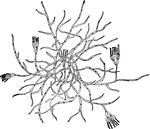
Mold
The green mold, Penicillium, one of the most common of the Sac Fungi. The hyphae of the branching mycelium…
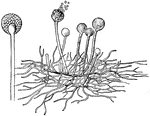
Common Mold
"Showing One of the More Common Molds found on Fruits and Bread. The tiny stalks grow verticallyinto…

Molds, yeast, and bacteria
"Showing the Comparative Size of Molds (a), Yeast (b and c), and Bacteria (d)." — Blaisedell,…

Mucor caninus
Mucor caninus is a species of mold found in soil, on plant surfaces, and rotting vegetables.
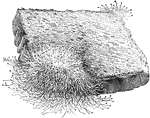
Mucor, a Common Mold
"A Piece of Bread upon which One of the Common Molds, known as Mucor, is growing." — Blaisedell,…
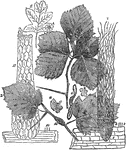
Cellular structure of peridia
"Under the power of about 90 diameters the general character of the peridia is seen. They are densely…
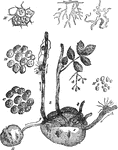
Potato Diseases at a Microscopic Level
"It is not unusual to fine a decayed spot in the center of potatoes otherwise apparently in good condition.…


